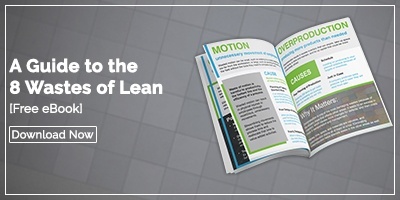 We, at KaiNexus, are fortunate to have the opportunity to chat with business leaders across the spectrum about the challenges and opportunities they face. Most conversations involve employee engagement, operational excellence, and customer satisfaction.
We, at KaiNexus, are fortunate to have the opportunity to chat with business leaders across the spectrum about the challenges and opportunities they face. Most conversations involve employee engagement, operational excellence, and customer satisfaction.
Continuous improvement is the relentless pursuit of incremental betterment through iterative refinements and innovative adaptations. Lean manufacturing is a systematic approach to optimizing efficiency and eliminating waste by empowering employees and streamlining processes, ultimately delivering maximum customer value.
This article explores the key differences between these process improvement methodologies and shares the concepts, principles, and applications of both approaches.
The Principles of Continuous Improvement
The continuous improvement model (CI) is the implementation of the idea that organizations reach their strategic goals and business objectives by improving in ways that emphasize a series of small incremental improvements. Five principles form the best practices for continuous improvement.
1: Improvements most often consist of small changes rather than relying exclusively on revolutionary transformations. Any idea that reduces waste speeds the time to market, reduces defects, or allows employees to gain new skills, among other benefits, is worth exploring.
2: Employee-suggested opportunities for improvement are valuable. A culture of continuous improvement relies heavily on employees at every level, not only top management and production teams, to identify and implement improvement opportunities.
3: Incremental improvements should not be expensive to implement. Many ideas involve eliminating process steps rather than adding more, utilizing "creativity over capital," as CI leaders often say.
4: Employees are responsible for most improvement activities. The continuous improvement model requires employees to identify, analyze, plan, and implement positive change, with leaders providing coaching and support.
5: Improvement is measurable. Common metrics are reduced costs, increased cycle times, improved customer satisfaction ratings, fewer defects, and fewer safety incidents.
Importance of Feedback and Evaluation
Feedback and evaluation provide valuable insights into the areas that need improvement, highlighting weaknesses and inefficiencies within processes, products, or services. They offer an objective performance assessment, enabling organizations to achieve continuous improvement and make data-driven decisions rather than relying on assumptions or guesswork. Involving employees in the feedback process fosters a culture of engagement and ownership, encouraging them to be proactive in continuous improvement efforts by suggesting solutions and improvements.
The Principles of Lean
The principles of Lean manufacturing, also known more broadly as Lean management, aim to maximize efficiency and eliminate waste in the manufacturing process, ultimately delivering greater value to customers.
Lean's Five Principles
The five bedrock principles of Lean organizations, as defined by Womack and Jones in the book Lean Thinking are:
Identify Value: Clearly define value from the customer's perspective. Understand what customers want and are willing to pay for, focusing on delivering products or services that meet those needs in the least wasteful way possible.
Map the Value Stream: Identify and map out the entire value stream, which includes all the steps and processes involved in creating and delivering the product or service, along with the delays that occur between those steps.
Create Flow: Streamline the value stream to establish a smooth and continuous flow of work, especially with the handoffs between teams or departments. Minimize interruptions, delays, and bottlenecks to further improve quality and efficiency and reduce lead times.
Establish Pull: Adopt a pull-based system where production and material movement are driven by customer demand. Produce only what customers need when they need it to avoid overproduction, reduce waste, and cut down on excess inventory.
Seek Perfection: Encourage and cultivate a culture of constant reflection, process improvement, and problem-solving to eliminate waste, inefficiencies, and defects, striving for perfection in all processes.
Importance of Eliminating Waste in Lean Manufacturing
Eliminating waste from production means delivering products and services that align with customer needs and expectations. This improved delivery of value to customers can result in higher customer loyalty and a stronger market position. Waste consumes valuable resources, such as raw materials, labor, and time, without adding value to the final product.
There are three specific types of waste in Lean:
Muda: The seven process wastes: transportation, inventory, motion, waiting, overproduction, over-processing, and defects
Mura: The waste of uneven demand or workloads
Muri: The waste of overburden for people or equipment
Removing all waste is impossible, but minimizing waste is the key to a production stream that delivers the highest value to the customer for the least cost.
Continuous Improvement vs. Lean: Which is Better?
Determining whether continuous improvement or Lean is better depends on an organization's context and specific goals. Both approaches have their strengths and can be highly effective in different situations.
Differences in Methodology
The continuous improvement philosophy focuses on incremental process, product, and service enhancements. It encourages a culture of innovation, empowers employees to contribute ideas, and fosters a mindset of continuous learning. Continuous improvement can be applied across various industries and organizational functions.
Lean production is a specific methodology derived from the Toyota Production System (TPS) to maximize efficiency and eliminate waste in processes. It provides a structured framework with principles and tools to identify and eliminate various forms of waste. Lean organizations rely on the PDSA (Plan, Do, Study, Adjust) improvement cycle to implement lasting change that positively impacts the value stream.
Advantages and Disadvantages of Continuous Improvement Model
The ROI of continuous improvement is significant because of several key advantages. The approach:
- Encourages a culture of innovation and creativity.
- Facilitates ongoing, incremental improvements.
- It can be applied to various aspects of an organization's operations.
- Involves and engages employees, leading to a more motivated workforce.
While there are a few downsides of continuous improvement, it does require a strong commitment from leadership to sustain and practice continuous improvement efforts. Success also requires daily attention and frequent recognition of employee engagement over the long term.
Advantages and Disadvantages of Lean
Organizations in all industries worldwide have adopted lean management. It is popular because it:
- Offers a structured and proven approach to process optimization.
- Emphasizes waste elimination, leading to cost reductions and increased productivity.
- Enhances process flow and reduces lead times.
- Provides clear principles and tools for implementation.
Organizations seeking to implement Lean outside of a production process should be aware that adapting to non-manufacturing settings may require more effort. Also, the initial implementation can be challenging without proper training and technological support.
The Common Ground: Value Creation
While the structure and tools used for continuous improvement and Lean management are different, they both seek to enhance value creation for the customer. Both operate to smooth production processes, reduce defects, and deliver products and services that customers love.
Combining Continuous Improvement and Lean
Organizations may find that combining both approaches works best for them, leveraging the principles of continuous improvement while adopting Lean tools and methodologies to streamline processes and achieve operational excellence. Continuous improvement is at the core of Lean. But Lean is a broader set of principles and methods.
How can the two methodologies supplement each other?
By integrating continuous improvement with broader Lean manufacturing approaches, organizations can leverage the best of both worlds—embracing a culture of ongoing learning and innovation while adopting a structured methodology for waste reduction and process optimization.
Examples of Successful Implementation of Both
Many companies across various industries have successfully implemented continuous improvement and Lean principles to achieve significant improvements in their operations and overall performance.
Procter & Gamble adopted continuous improvement methodologies to optimize product development, supply chain, and manufacturing processes, allowing the company to stay competitive in the consumer goods industry.
Intel successfully applied Lean manufacturing concepts alongside continuous improvement to optimize semiconductor production processes, leading to improved yield rates and reduced costs.
Inspired by the Toyota Production System, Honda, and other automakers adopted continuous improvement initiatives in their manufacturing processes, leading to increased productivity and better quality control.
These companies exemplify how continuous improvement and Lean principles can drive success and competitiveness across diverse industries.
Conclusion
Both continuous improvement and Lean have the same fundamental goal of improving processes. They share the philosophy of never being satisfied with the status quo, constantly analyzing improvement opportunities, and always seeking ways to enhance efficiency, quality, and value. Continuous improvement principles are crucial in sustaining and evolving Lean practices over time, ensuring that the organization continues to refine and optimize its operations.
Choosing the Right Methodology for Your Business
Ultimately, the best approach will depend on the unique circumstances and priorities of the organization. In some cases, it may be beneficial to start with continuous improvement to build a culture of innovation and then incorporate Lean principles and tools as needed to tackle specific improvement challenges. Regardless of the chosen approach, a commitment to ongoing improvement is essential for sustained success in today's competitive business environment.
Whichever approach you take, KaiNexus has the tools to support your team, making it easy for everyone to engage in taking small steps toward operational excellence.




Add a Comment